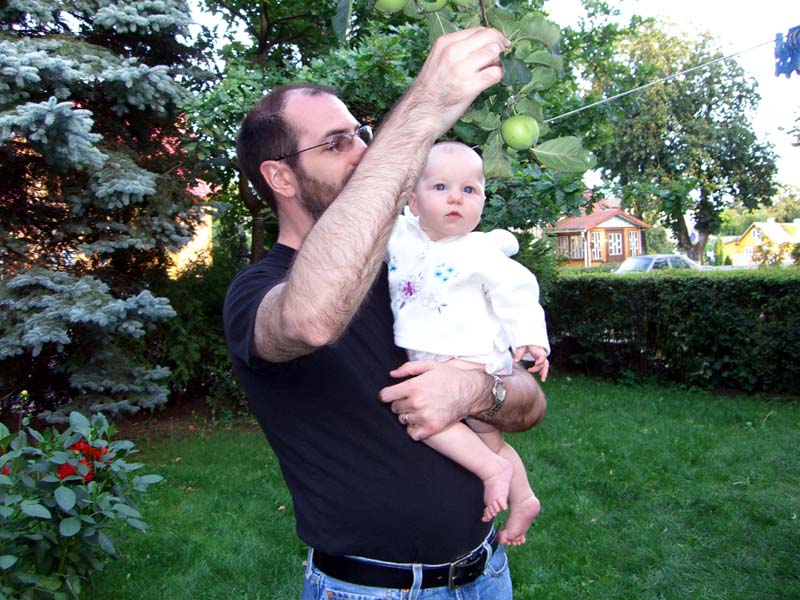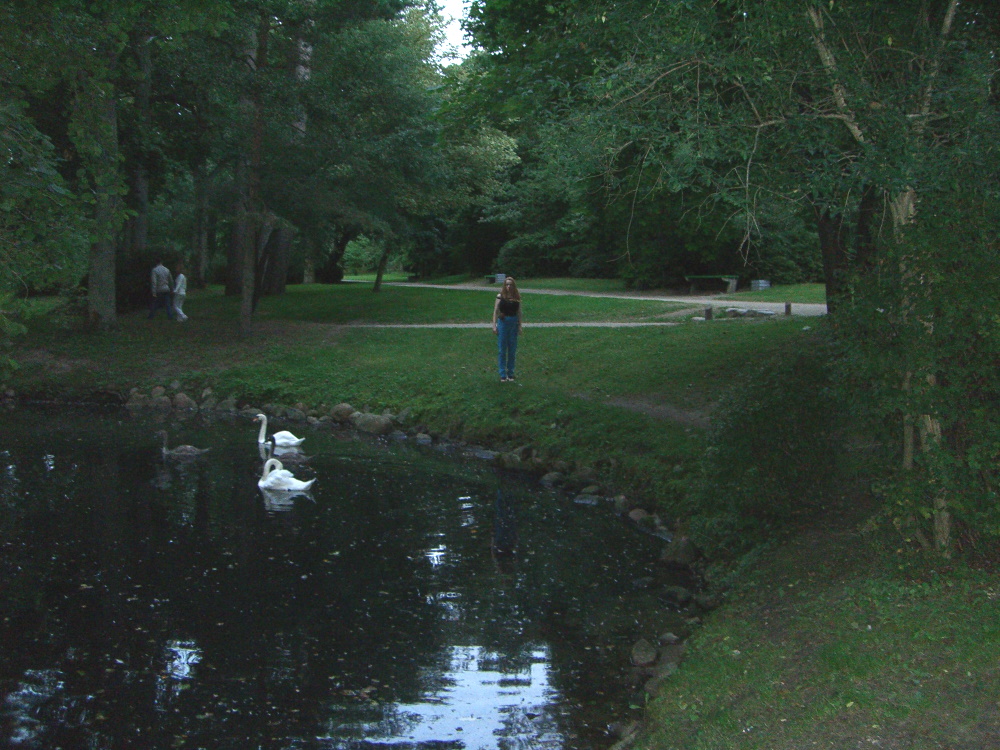Palanga, Lithuania, September 2005
On Saturday, September the 3rd of 2005, my parents, I, S, and our daughter E drove to Palanga, a coastal town and a popular Lithuanian vacation destination. Arriving there late at night, S and I immediately went out to meet with my sister and her boyfriend, who got there well ahead of us. We had a good dinner and conversation, and I was puzzled by the lack of decent nightlife in the resort town that is Palanga.
When we arrived to Palanga at 10:30 at night, S and I immediately went out to meet with my sister M and her boyfriend P at their favorite bar, Ramybė (it’s pronounced rum-EE-beh and means serenity). After a dinner and drinks we checked out the nightlife in Palanga. The offerings were somewhat disappointing. It was past midnight on a Saturday night and the bars and cafes were already closing, which I thought was unusually early for a resort. But even if they had been open, they were not the kind I would want to hang out at, my sister assured me. They play Lithuanian pop music of the cheesiest kind, where every second word is “sea” or “love”. I asked her if there were no bars (other than Ramybė) or clubs that catered to a little more sophisticated tastes, and she said she didn’t think so. Does no one with edgier taste come to Palanga, I asked? What about college kids? They are supposed to like different kinds of music. In my day they used to come to Palanga. My sister didn’t know if they still do, or if there were any clubs or bars that catered to them. She didn’t go to clubs much anymore.
Left to right: myself, S, my sister’s then-boyfriend-now-husband P, and my sister M at the Ramybė bar.
Here is another picture of our family at the Ramybe bar.

Grandma and E with flower in her hair in the garden of the house where we stayed

All of us at a Russian cafe in Palanga. The restaurant might have had a more specific name than just “Russian cafe”, but if so, I don’t remember it. This was one of the minor moments of cognitive dissonance — though not an unpleasant one — that I experienced upon visiting Lithuania 10 years after its post-Soviet transition. Russian food was now relegated to the realm of ethnic food, on par with cuisines of other countries like, say, Mexican or Indian (though much better known to most Lithuanians than those others), instead of being just standard cafeteria and restaurant fare.
Left to right: me, my mom, my sister, sister’s then-boyfriend-now-husband, my dad and S.

S shows E apples on the trees in the garden of the little house in Palanga where we stayed.

The little house in Palanga where we stayed (my parents inherited it from my dad’s parents) is very modest on the inside but it has a beautiful garden and exterior details. It also has an outdoors structure which in my childhood days used to be called a pergola, although I think a pavilion or gazebo would be a better word. Here is S with 4-month-old E in front of the pergola.

I had to get a picture of myself in front of one of the key places of my childhood, the bridge over the Rąžė creek. On the other side of the stone bridge lies the main street of Palanga. Perpendicular to it is the main pedestrian street, which leads to the beach (my American daughter started calling it The Boardwalk, as its actual name was too much of a mouthful to her). The intersection of those two streets lies just beyond the stone bridge; in fact, there is a little plaza there that’s currently occupied by many junk food and knickknack vendors. But the main point of interest to me were the stone parapets surrounding the intersection. It was there that the cool kids used to congregate in Palanga. (Not that I was ever a cool kid.) Most of them were, like me, from other cities and towns of Lithuania, here for a brief vacation. The stone parapets, simply called “the stones”, were the place to be seen at.

Palanga has a big, beautiful park dating from the 19th century, that surrounds a former palace that’s currently a museum. It has ponds with swans and ducks.
